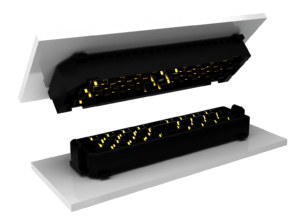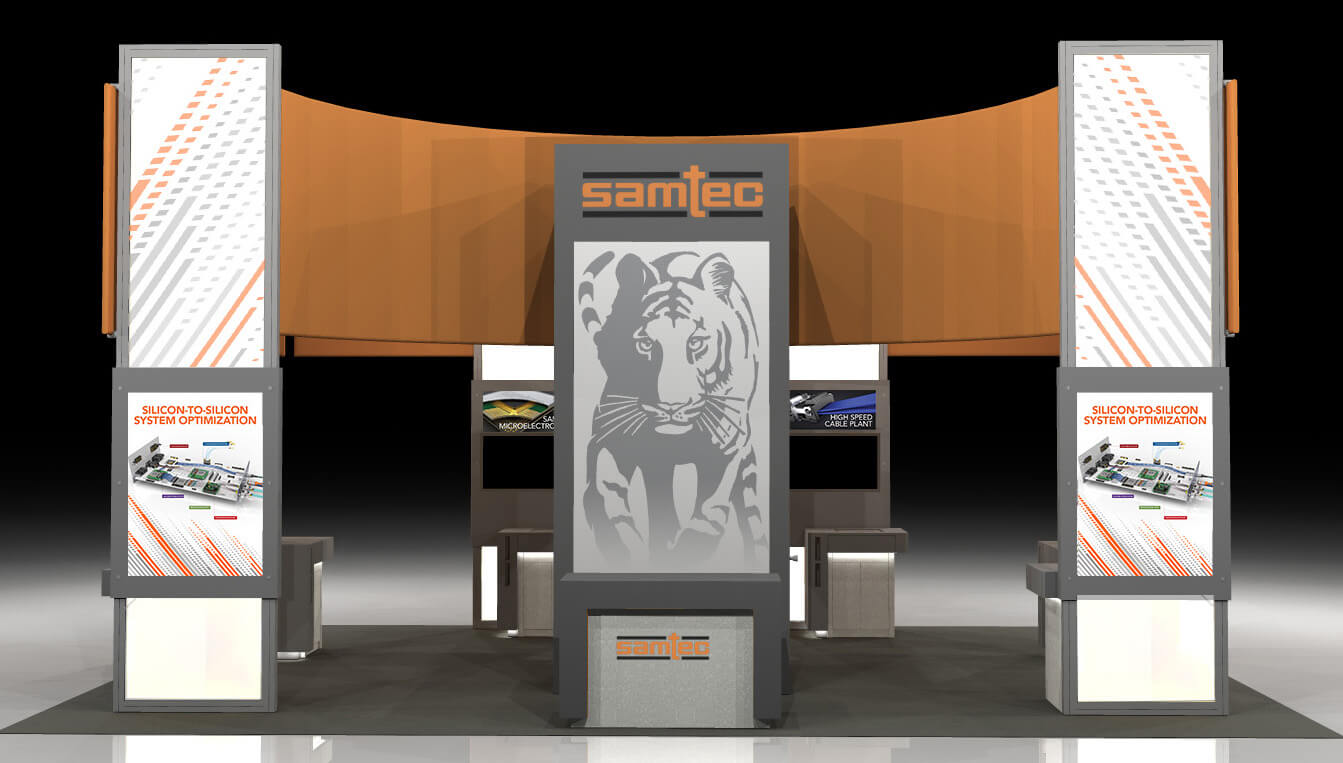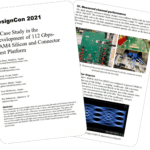
A key component of any high-speed signal path is the interconnect. Design engineers must identify the right connector (or connectors) and the best performance for the application. At 56 Gbps PAM4 data rates (and higher), connector selection becomes more challenging.
Interconnect manufacturers like Samtec make connector performance data readily available to support the connector selection process. Measured data in the form of S-parameters are often the most trusted, but just how good are those measurements?
De-embedding Advantages and Challenges
Every connector S-parameter measurement has an associated test fixture. Since it’s nearly impossible to place test equipment directly next to the connector, test fixtures can blur the true performance of the mated connector set. De-embedding (removing) the test fixture has become routine in the industry. This enables cleaner S-parameter measurements and more precise performance data.
De-embedding the test fixture has its challenges. The de-embedding process uses PCB-based calibration standards whose impedances can vary by +/- 10%. These variations directly affect the quality of any measured data. Additionally, no standard was available to define how accurate the measured de-embedded data had to be.
These challenges have resulted in a lack of trust in any de-embedded measurement data provided by interconnect manufacturers. With nuances to de-embedding test fixtures and a lack of a definitive standard, what steps could be taken?
Standardizing S-Parameter Measurements
In 2015, an industry effort was started to help standardize S-parameter measurements for passive structures like PCBs, connectors and cables. The IEEE-P370 Working Group was born. Made up of industry heavyweights like Intel and Cisco with heavy participation from interconnect and instrumentation companies, IEEE-P370 now addresses many technical questions about de-embedding.
What are the acceptable limits for s-parameter causality and passivity? What key criteria should be used when designing test fixtures? What design pitfalls should be avoided? How can the de-embedded test fixture mathematical algorithms be verified?
The IEEE-P370 Working Group answers these and other questions. IEEE-P370 provides guidance on test-fixture design, the de-embedding algorithm and techniques for assessing the quality of the measured data. IEEE-P370 also has developed three quality levels of measured S-parameter data. This instills confidence in the data for end users.
The Kit
In theory, the achievements of IEEE-P370 are progress for the industry. However, design engineers always need “proof” that the theory works. Members of the IEEE-P370 have developed Plug & Play De-embedding Kit in Support of IEEE–P370.
This “Plug & Play” kit allows design engineers to experiment with metrology-grade test fixtures and DUTs like their mated connector pairs. Various calibration standards can be tested to explore the effect they have on de-embedding algorithms and resultant data quality.
The Award
The IEEE-P370 Working Group provided an update on its progress at DesignCon 2018. In the Power and RF Design category, Samtec’s Jim Nadolny and a team of technical experts wrote and presented a paper entitled “A NIST Traceable PCB Kit for Evaluating the Accuracy of De-Embedding Algorithms and Corresponding Metrics”. Other authors include:
- Heidi Barnes, Keysight Technologies
- Eric Bogatin, Teledyne LeCroy
- José Moreira, Advantest
- Jason Ellison, Amphenol FCI
- Jim Nadolny, Samtec
- Ching-Chao Huang, Ataitec
- Mikheil Tsiklauri, Missouri University of Science and Technology
- Se-Jung Moon, Intel Corporation
- Volker Herrmann, Rohde and Schwarz
The resultant technical paper won one of 10 DesignCon Paper Awards for 2018. The award recognizes the merits of the IEEE-P370 Working Group and the outstanding contributions made by the authors to the industry.
The Results
What practical results has the IEEE-P370 Working Group achieved? Samtec has used the work of IEEE-P370 to validate its internal de-embedding processes. The new quality levels of measured S-parameter data proves Samtec’s de-embedding algorithms stack up with the best in the industry.
Ultimately, design engineers can have confidence in Samtec’s connector performance data due to the influence of the IEEE-P370 Working Group. For more information, please contact our SI technical experts at [email protected].



